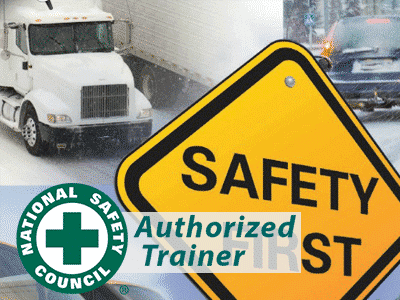Contributed by Sherri Mills
Safety and Service – Creating a Balanced Approach
With personal safety and the safety of others at the forefront of our minds, safety will remain in focus as we re-start our engines, and re-open our doors. As fleet management resumes a more robust pace in the days ahead, the scope of business reality and total cost of ownership (TCO) for fleets will include a balance of both safety and service.
First, as demand increases and productivity resumes, so does the efficiency required to perform at optimum levels. The essential vehicles of your fleet, and the employees that drive those vehicles, will still be your most valuable assets. Protecting them and ensuring their safety is critical.
Back to Basics

Reducing Fuel Spend
Next, but equally important is Fuel economy. Gas mileage usually decreases rapidly at speeds above 50 mph. For every 5 mph driven, over 50 mph, it is costing roughly an additional $0.18 per mile for gas. With monitoring and coaching, you can easily slow drivers down and capture that savings.
In addition, speeding is one of the most prevalent factors contributing to vehicle collisions. It impacts the total cost of risk, predominantly in workers compensation claims. A report by OSHA, NHTSA, and NETS estimated that one work-related accident involving a fatality could cost an employer $500,000. Telematics’ accelerometer data provides the insights for targeted coaching to ensure the safety of your fleet and your drivers by reducing collisions.
Optimize and Right Size
Finally, consider the service component. To maintain balance within your fleet, the other side of the scale is ensuring safety on the road with proper servicing and maintenance. Time is money; not only in recovery mode, but also in building and preserving your fleet going forward. As you rebuild your fleet focus on rebuilding more efficiently than before.
Understanding asset utilization, average miles driven per day, rolling cost per mile by route and improved maintenance can make your fleet leaner and more efficient without a loss of revenue. You can rehire your best field service technicians and implement new standard for training and service. During this slow period you can review all aspects of your business and prepare a new way of doing things when our country gets past the Covid-19 challenge.
Use the Tools to Balance Safety and Service
Telematics data provides the details you need to proactively schedule and plan for routine maintenance. Engine data alerts you to ongoing service issues and reduces down time. Planned maintenance is a standard part of vehicle ownership, but unplanned repairs due to aggressive driving and vehicle misuse are an unnecessary cost. The cost savings resulting from fewer scheduled maintenance appointments is a given. In contrast, a non-scheduled maintenance interruption can result in lost profits of between $400 to $700 per incident for a standard vehicle and thousands for a truckload of frozen seafood.
The Organization for Economic Co-operation and Development (OECD) reports that telematics technology can help a company reduce these scheduled and unscheduled maintenance and repair incidents by as much as 14%. Managing your fleet with specific diagnostics information and daily reporting of service needs will provide better control, overall planning, and build longevity for the next phase of your operations.

Proactively managing with balanced attention to safety and service gives you a competitive edge. Stay safe on the roads with telematics technology from Fleetistics, and build toward a better, stronger tomorrow.


